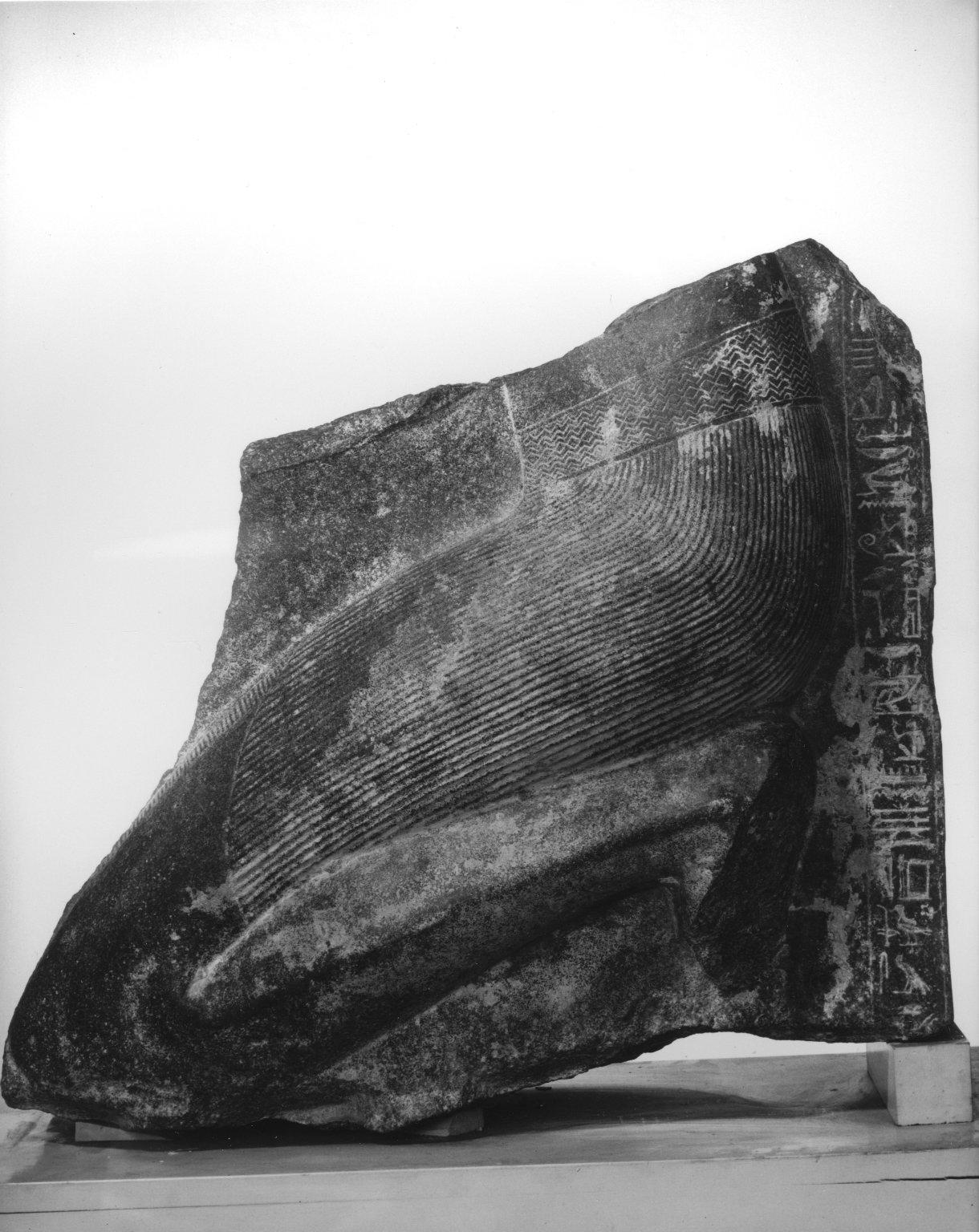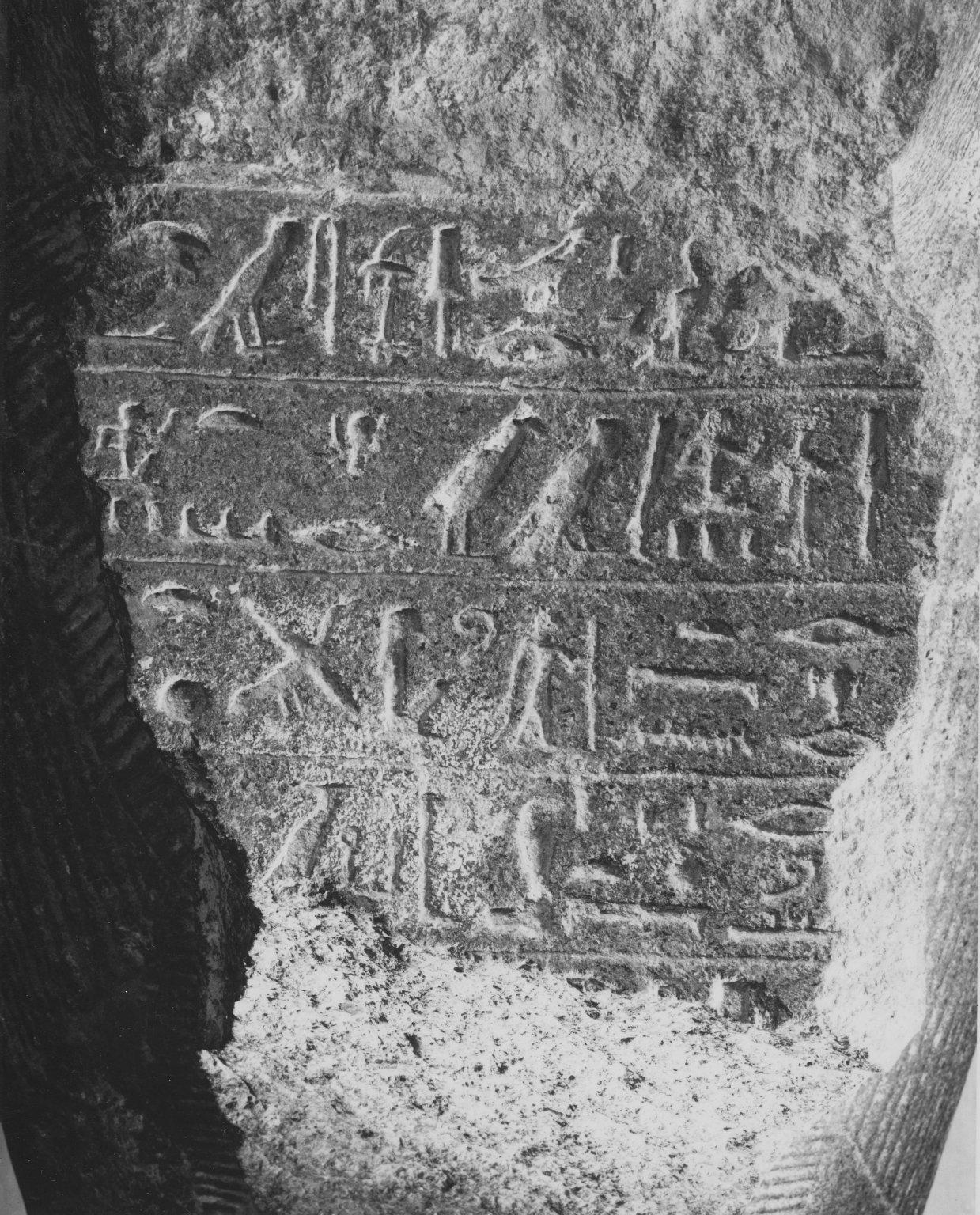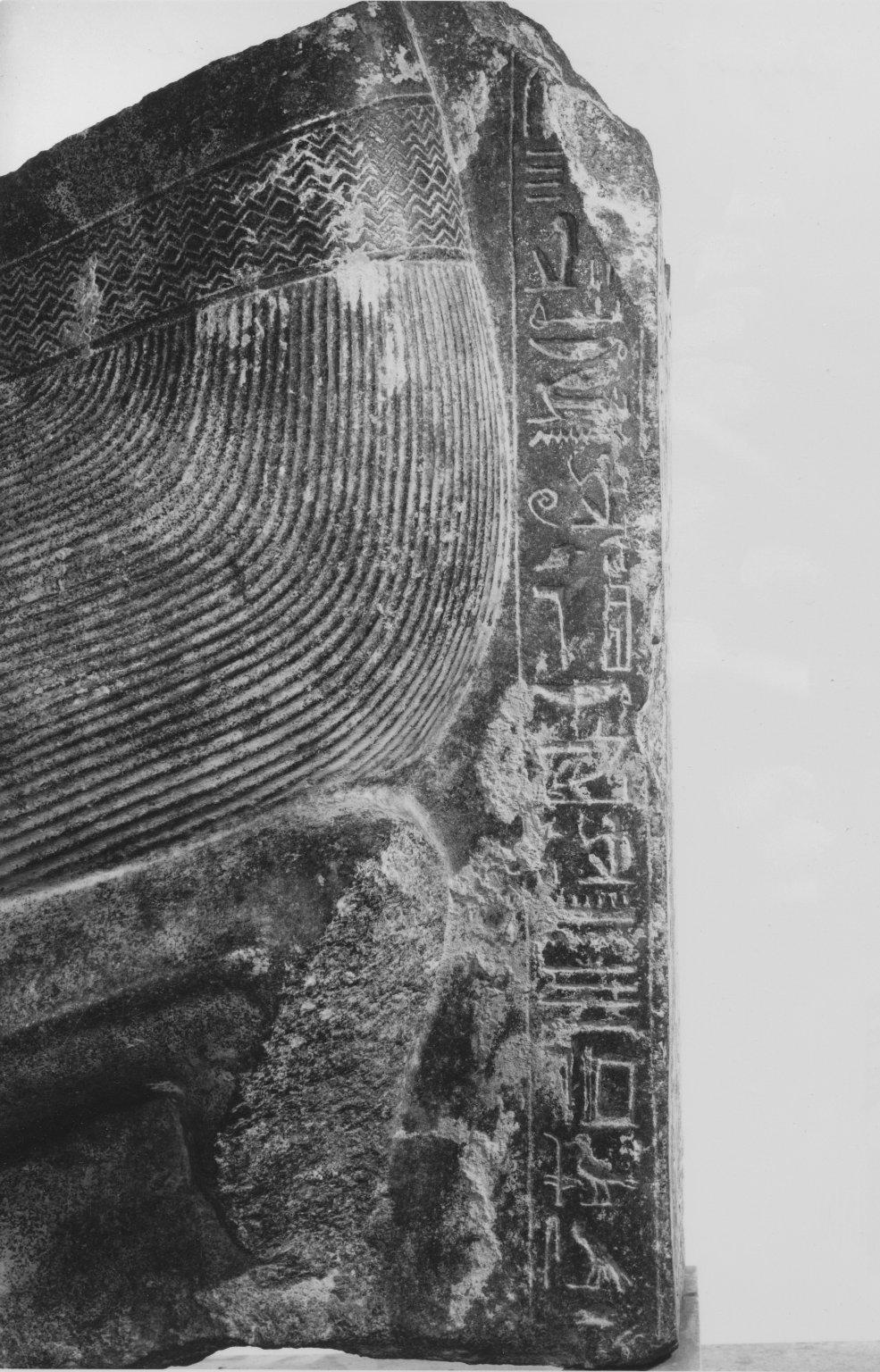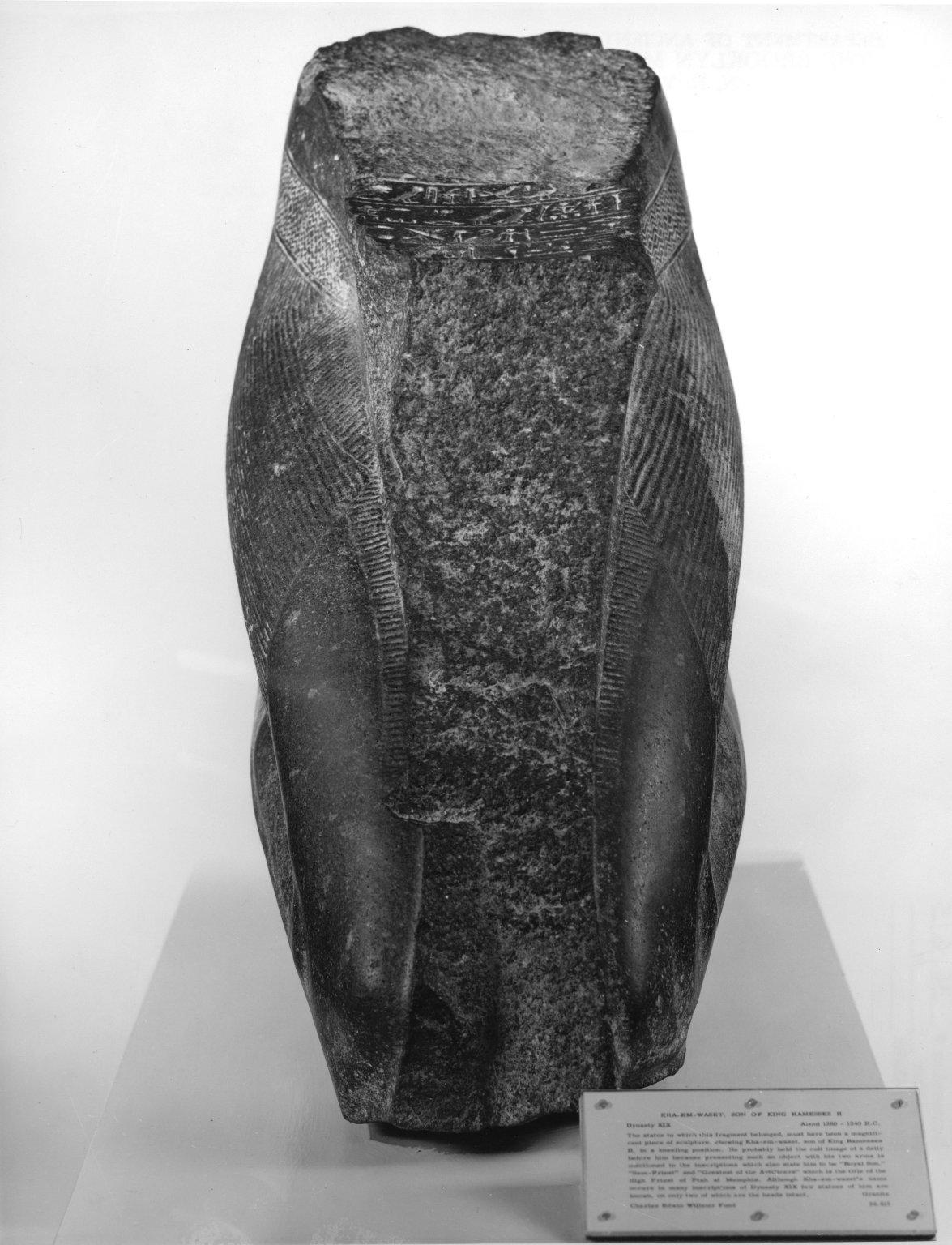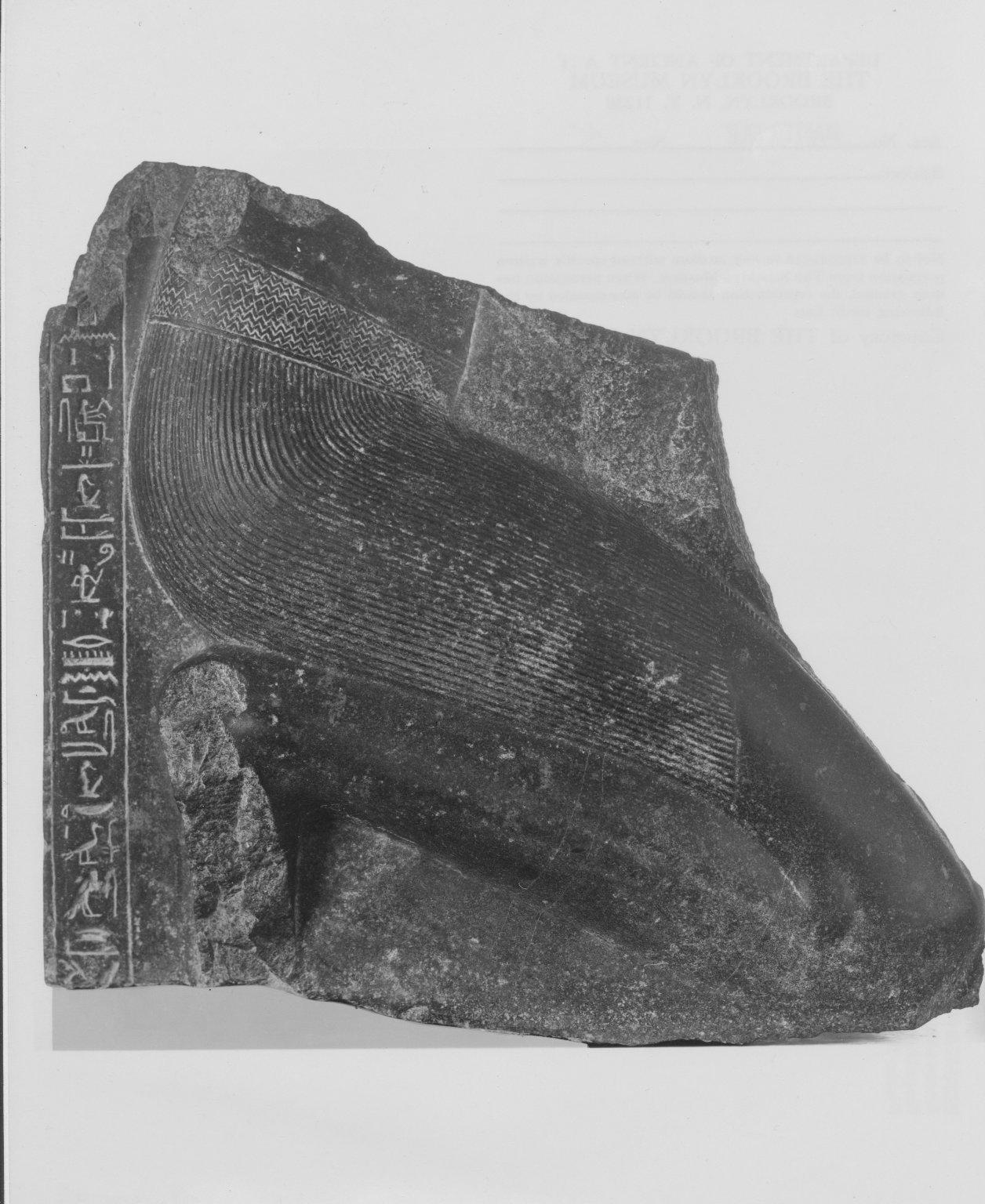Crown Prince Khaemwaset
ca. 1279–1213 B.C.E.
1 of 20
Object Label
Khaemwaset, the fourth son of the pharaoh Ramesses II, is known as the first Egyptologist because he studied and restored ancient monuments, including pyramids, built more than a thousand years earlier.
The large size and exquisite detailing of this statue emphasize the prominent position of Khaemwaset. The exclusively royal wave pattern on the belt testifies to his nobility, while the superbly modeled musculature of his legs reveals youthful strength.
The statue originally held an image of a god, probably Ptah, who is mentioned in the fragmentary inscription. The text also provides Khaemwaset’s titles: hereditary prince, king’s son, sem-priest, chief directing artisans.
The large size and exquisite detailing of this statue emphasize the prominent position of Khaemwaset. The exclusively royal wave pattern on the belt testifies to his nobility, while the superbly modeled musculature of his legs reveals youthful strength.
The statue originally held an image of a god, probably Ptah, who is mentioned in the fragmentary inscription. The text also provides Khaemwaset’s titles: hereditary prince, king’s son, sem-priest, chief directing artisans.
Caption
Crown Prince Khaemwaset, ca. 1279–1213 B.C.E.. Granodiorite, 28 × 16 × 20 in., 585 lb. (71.1 × 40.6 × 50.8 cm, 265.35kg). Brooklyn Museum, Charles Edwin Wilbour Fund, 36.615. (Photo: Brooklyn Museum)
Gallery
Not on view
Gallery
Not on view
Title
Crown Prince Khaemwaset
Date
ca. 1279–1213 B.C.E.
Dynasty
Dynasty 19
Period
New Kingdom
Geography
Place made: Egypt, Reportedly from: Thebes (Karnak), Egypt
Medium
Granodiorite
Classification
Dimensions
28 × 16 × 20 in., 585 lb. (71.1 × 40.6 × 50.8 cm, 265.35kg)
Credit Line
Charles Edwin Wilbour Fund
Accession Number
36.615
Have information?
Have information about an artwork? Contact us at






